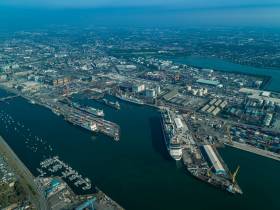Displaying items by tag: Public InviteVotes
Engineering Projects in Dublin Port Among Award Shortlist: Public Invited to Cast Vote
Two projects in Dublin Port have been shortlisted for the 'Engineering Project of the Year' and both are located within Alexander Basin which is undergoing a major redevelopment as part of the port's Masterplan 2040.
The port projects shortlisted are Ocean Pier Berth 31-34 (see: another 'Brexit-Buster) located to the east of Alexandra Basin and a new Ro-Ro Jetty. The latter is sited on the opposite west side of the basin nearby to the Tom Clark Toll-Lift Bridge, otherwise widely known as the East-Link.
Construction of these particular projects within the Alexandra Basin Redevelopment (ABR) works were carried out by Keating as part of the Roadbridge Keating Joint Venture which has been shortlisted at the Engineers Ireland Excellence Awards 2019.
The Awards recognises the highest level of achievement in the engineering field and provides peer recognition of outstanding Irish engineering work.
Engineers Ireland is calling on the Irish public to vote online for what they consider to be the Engineering Project of the Year. To take part, voting must be cast before the deadline of (tomorrow) midnight, Friday, November 8, 2019. To find out more about casting your vote click this link.






























































